We are well aware that animals can defend themselves from predators and other creatures that may threaten them. It shouldn’t surprise you that plants can do the same.
Unlike animals, however, plants’ defense mechanisms are much more subtle. Some species possess waxy cuticles and poisonous secretions or develop a symbiotic relationship with ants and other stinging insects. Meanwhile, other species are gifted with the stiff modified branches we call thorns.
Thorny plants have developed these prickly structures to protect them from being eaten by animals.
Thorns can be found on any part of a plant, including leaves, stems or even around their flowers.
However, not all these thorny plants are dangerous. Some of them are cultivated as houseplants or garden plants. With that said, here are 11 common flowering plants with thorns that you should know:
Table of Contents
Aloe vera (Aloe barbadensis)

From a quick glance, aloe veras might look like a smaller version of a cactus due to being a succulent and thorny plant. But actually, they aren’t related to one another.
These stemless plants can be recognized by their thick, fleshy green leaves with random white or gray spots on the upper or lower part of the leaves. They also have small thorns at the edges of each leaf that resemble small teeth. Under the right conditions, aloe veras will produce tall stalks of tubular yellow flowers in the summer.
Aloe veras are native to the Arabian region and Madagascar but can also be found growing wild in zones 8 to 11, particularly in regions such as Southern Europe and North Africa. In the United States, they thrive in Texas, California, New Mexico, and Arizona. Due to the movement of plants around the globe by humans, aloe is prevalent in many of these landscapes.
You can also find many health products that use aloe vera extract to treat medical issues such as skin diseases, sunburn, heartburn, digestive problems, acid reflux, and lowering blood sugar levels.
Flowering Quince (Chaenomeles sp.)
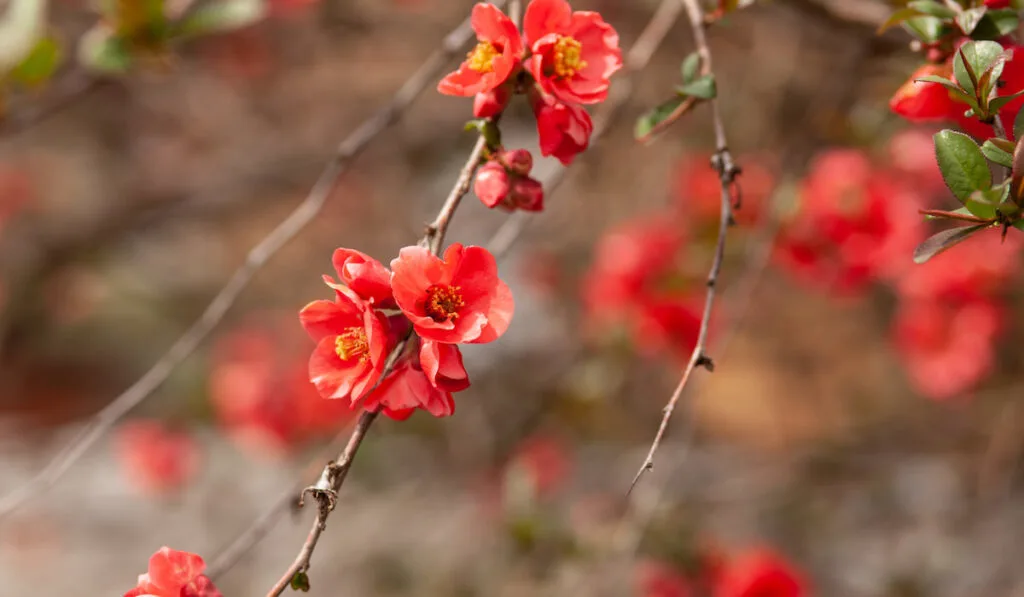
Closely related to the Rose family, these thorny deciduous shrubs are native to eastern Asia, particularly in China and Japan. They can be recognized by their spiny stems, serrated leaves, and five-petaled flowers that usually come in shades of pink, red, white, and coral.
Quince produce large, hard fruits that resemble apples or pears. These fruits mature when they turn green, yellow, and yellowish green. The fruits taste bitter when eaten raw, but they are often made into jellies and jams.
Flowering quinces, or those varieties better known for their flowers than for their fruit, typically bloom in late winter and early spring. They grow in zone 5 to 9 and prefer partial or full sun. Unlike other plants, quinces are low-maintenance and not fussy about soil conditions as long as there is proper drainage.
Rose (Rosa sp.)
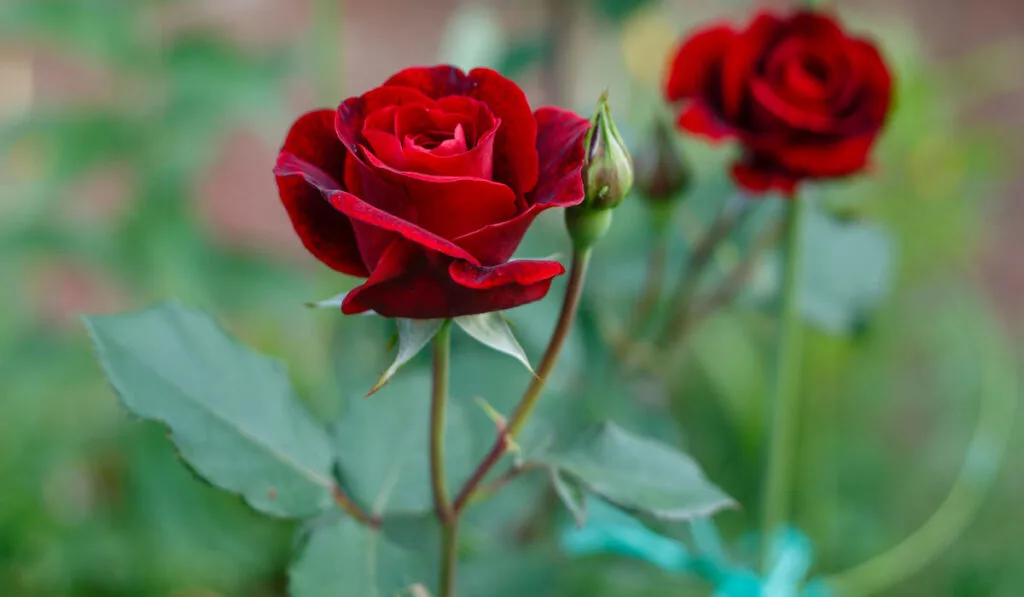
Almost everyone knows that roses are the thorny symbols of romance and love. These woody perennial plants are native to most countries north of the equator but can be found worldwide in landscapes and cut flower greenhouses.
They generally grow between 4 and 8 feet tall, but some climbing cultivars grow up to 50 feet tall. Roses come in almost every color and all shades in between. Roses usually bloom in late spring and, with proper care, may bloom several times through to fall.
Although more than 100 species of roses exist worldwide, they all fall into three major categories: wild, old garden, and modern. With a growing zone of 5 to 10, roses need full sun, rich, well-drained soils, and moderate amounts of water. Annual pruning should be done to promote better growth by removing old or dead canes and any winter-damaged stems.
Bougainvillea (Bougainvillea glabra)
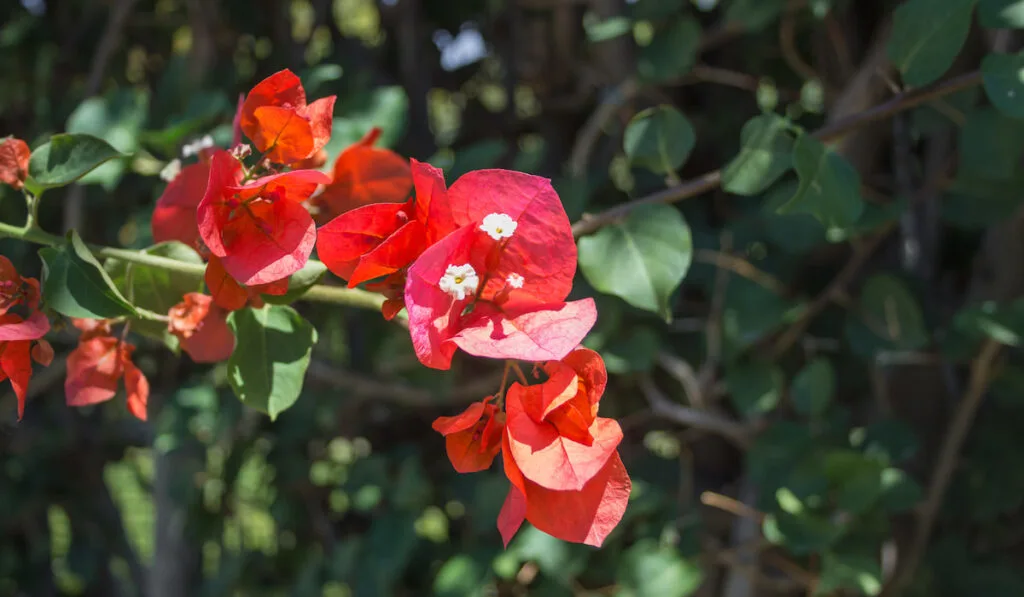
Bougainvilleas are showy thorny vines that make a great addition to your gardens or ornamental containers. These hardy tropical plants are native to South America, specifically in Brazil. In the United States, they are commonly grown as landscape plants in Southern California, Arizona, Texas, and Florida.
Bougainvilleas can be recognized by their prickly stems, heart-shaped leaves, and crepe paper-like flowers in bright colors such as red, yellow, white, pink, orange, and purple. Another thing to note is that some larger species, such as crawling cultivars, can grow up to 40 feet tall.
These plants grow in zone 9 to 11. Their blooming season typically starts in November and continues to May, provided they have well-drained soils with enough water and full sun.
Holly (Ilex sp.)
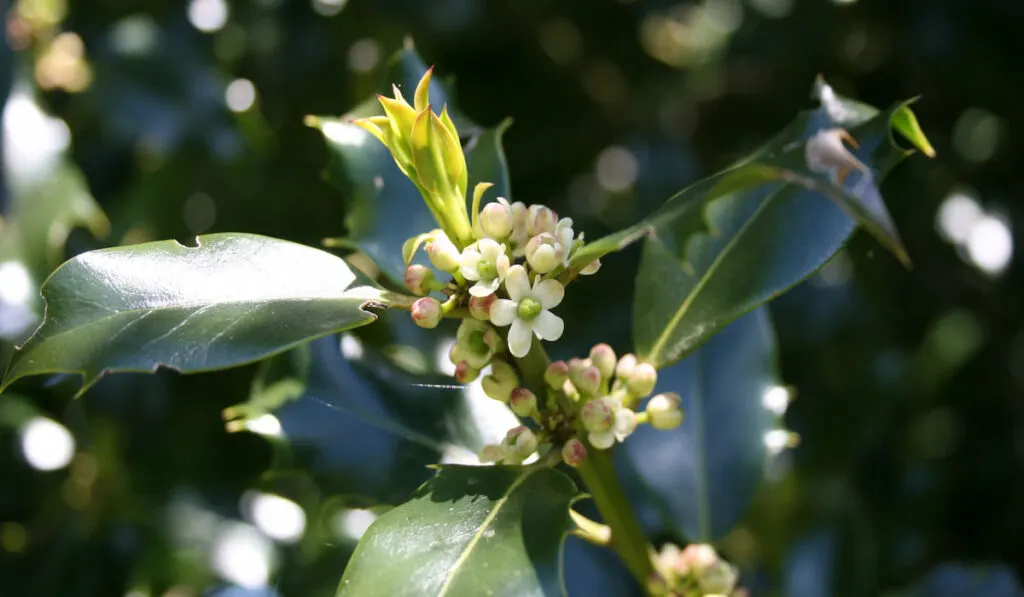
Plants of the Ilex genus are native to many areas of Europe, North America, and Asia. Holly can be divided into two categories—evergreen and deciduous. Many species of these shrubs are easily recognized by their spiny, dark green leaves, thick green-brown stems, and shiny red fruits.
Other varieties of holly possess different fruit colors, such as black for Japanese holly and bright, dull red for winterberry holly. Plants in this genus are dioecious, meaning they require separate male and female plants to produce viable fruit. Male and female plants look very similar, generally only differing in the flowers they produce.
Holly bears pink-whitish, tiny four-petaled flowers that start blooming from early spring until early summer. Growing in the USDA zones of 5 to 9, these plants can tolerate partial to full sun and thrive in moist, well-drained soil. They are staples in foundation and landscape plantings, and the foliage is harvested for holiday decorations.
Hawthorn (Crataegus sp.)
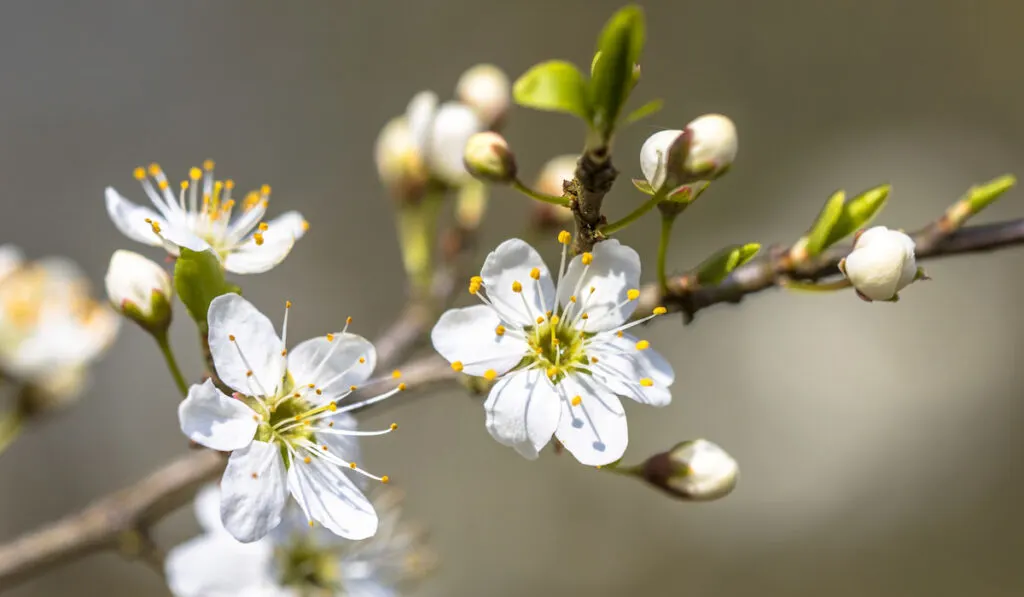
Hawthorn hails from North America, Europe, Asia, and North Africa. They also go by their other names, such as Mayflower, white thorn, hawberry, quickthorn, May-tree, and thornapple.
These deciduous trees and shrubs can be recognized by their toothed green leaves, pink or white five-petaled flowers, red pomes, and brown stems with long, sharp thorns. Growing up to almost 25 feet, hawthorn usually blooms from April to late May or early June. They thrive in the USDA zones of 5 to 9 and prefer any type of soil with proper drainage. These plants can also grow under partial or full sun and are popular in hedgerows and boundary plantings.
Honeylocust (Gleditsia tricanthos)
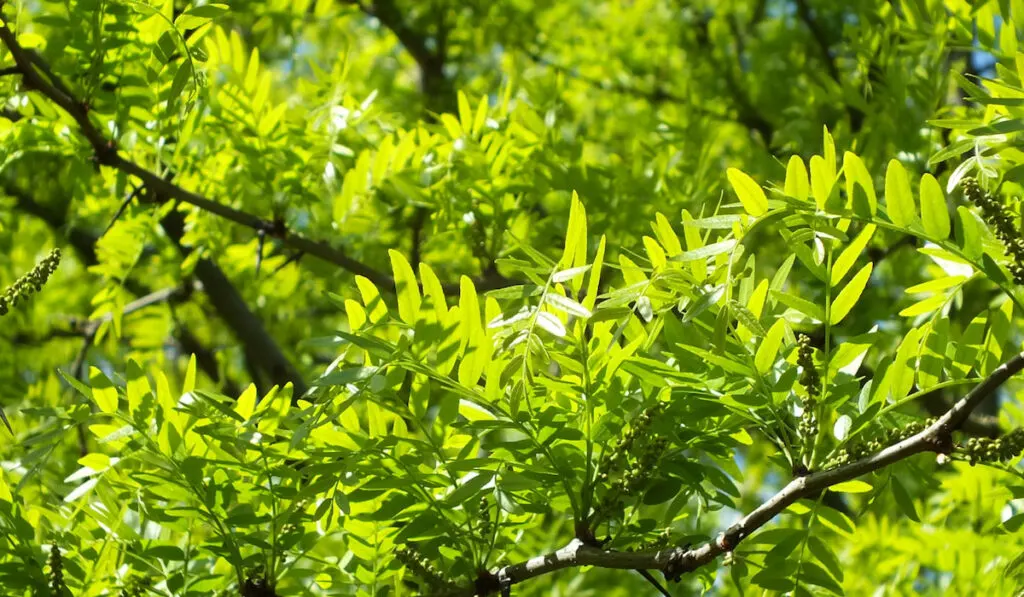
Also known as the thorny locust and thorny honeylocust, these deciduous plants originated from regions such as central North America, eastern Asia, the Middle East, and tropical Africa. Honeylocusts can be recognized by their light green bipinnate (made of small leaflets per leaf) leaves, thorny branches, stems, trunks, and clusters of scented white flowers that usually bloom in late spring.
At most, these trees can grow up to 100 feet tall with a life span of almost 120 years. Honeylocusts thrive in zones 4 to 9. Their fruits are produced in dark brown pods that grow 6 to 16 inches long.
Honeylocusts are hardy and easy to grow. All they need is full sun and moist, well-drained soils. The trunks of these plants can also be used for timber production, and their seeds or pods can be grounded and processed into feed for farm animals.
Agarita (Mahonia trifoliolata)
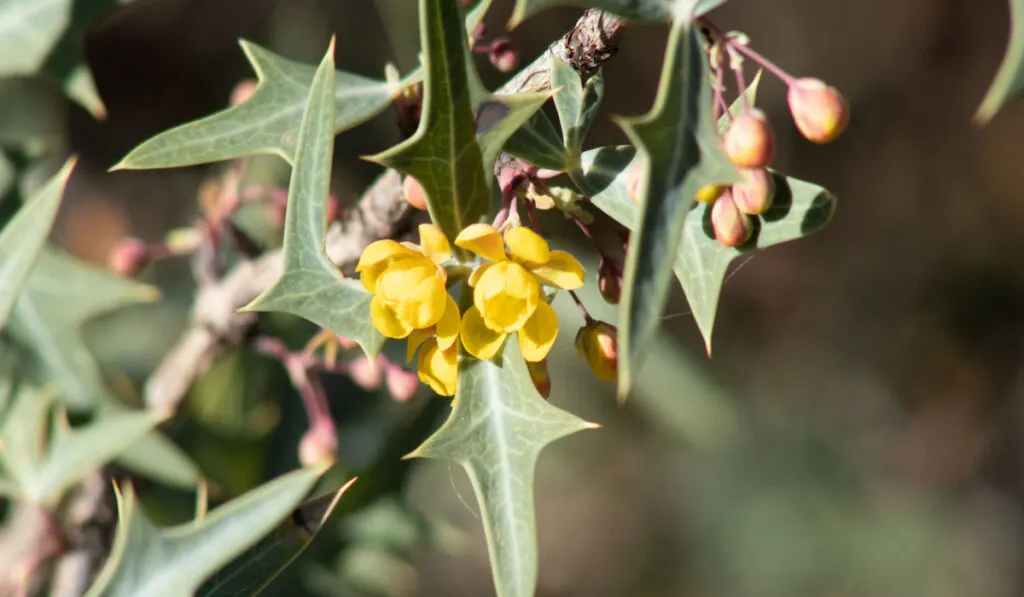
Agaritas are evergreen flowering plants that originated in the southwestern United States, particularly in Texas, Arizona, and New Mexico. These small to medium-sized plants can be distinguished by their gray-green or blue-green trifoliate and thorny leaves, dark brown stem, and yellow, cup-like flowers that bloom in the early or middle spring.
They also bear bright red fruits that usually mature in June. The fruit can be safely consumed or turned into products such as jellies and jams. Agaritas grow in the USDA zones of 7 to 9. They thrive under partial or full sun and in moist, well-drained soil.
Some parts of plants also possess medicinal values that are beneficial for human use. For instance, the leaves can be chewed to reduce nausea, and the roots have antiviral and antimicrobial properties.
Sea Buckthorn (Hippophae rhamnoides)
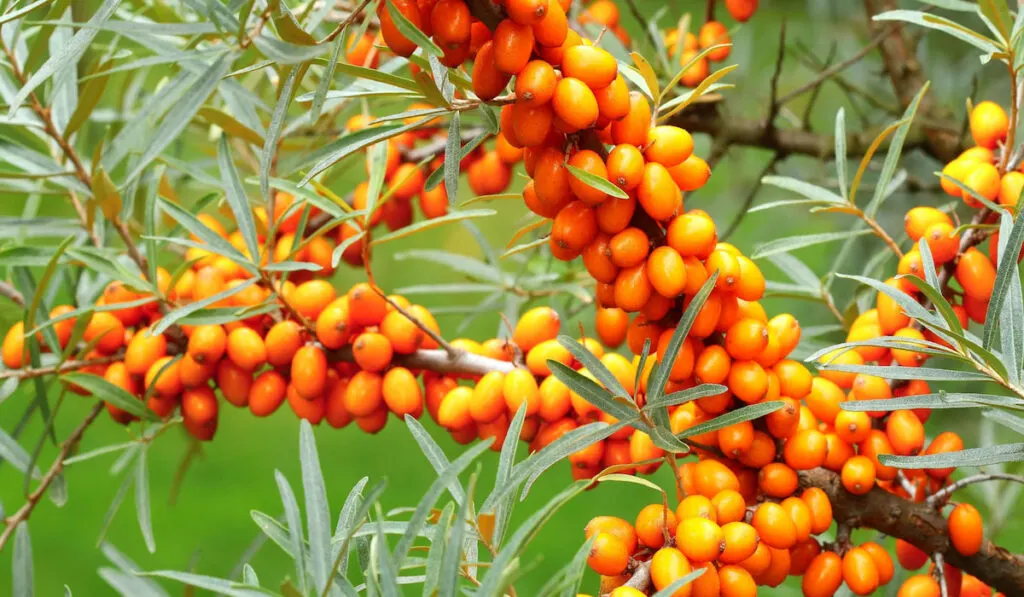
These deciduous shrubs are native to Europe and other parts of Asia, such as China and Tibet. They are also known as seaberry, sandthorn, and sallowthorn.
Sea buckthorns can be recognized by their long and elongated pale green leaves, thorny stems and branches, and brownish or reddish-orange fruits. These plants will produce small, whitish green flowers in late summer that grow in clusters.
On average, sea buckthorns could grow up to 19 inches tall in the USDA zone of 3. People of Tibet called these plants “holy fruits” due to their medicinal values in treating health issues such as skin problems, digestive issues, coughing, cuts and wounds, and many more.
Crown of Thorns (Euphorbia milii)

These evergreen perennial plants are native to the Middle East and also Madagascar. Crown of Thorns possesses bright green leaves, thorny, thick stems, and bi-petaled flowers that usually bloom during all seasons.
Each variety produces different colors of flowers, such as red, yellow, white, and pink. Due to their small size of around 5 feet tall, these plants are often grown as indoor plants in cooler regions. These succulent plants thrive outdoors in USDA zones 9 to 11. Being a low-maintenance species, Crown of Thorns thrive in moist, well-drained soil and under full sun.
Firethorn (Pyracantha)

Firethorns are small to medium-sized shrubs originating in southwest Europe and southeast Asia. They typically grow in the USDA zones of 6 to 9, with a height between 6 and 12 feet. In some cases, they can even grow up to 18 feet tall.
These plants are easily distinguished by their oval-shaped green leaves, prickly stems, and clusters of small red fruits that attract birds during the fall and winter. They also possess small, five-petaled flowers bloom in the summer and spring.
Firethorns usually thrive in any type of well-drained soil and under partial or full sun. There are a few varieties of firethorn that you can find in the United States, such as the ‘Mohave,’ ‘Lowboy,’ ‘Apache,’ ‘Teton,’ and ‘Fiery Cascade.’
Final Thoughts
Although these thorny flowering plants might be a hassle to pick or even grow safely around kids and pets, they definitely possess their own aesthetic and natural beauty. Most of the species listed above can be grown in and around your house. Knowing how to handle and maintain them despite their prickly defenses can add texture and interest to your landscape or indoor plant display.
Resources:
- https://www.newworldencyclopedia.org/entry/rose
- https://gardenerspath.com/plants/succulents/grow-aloe-vera/
- https://www.gardenia.net/plant-variety/chaenomeles-flowering-quinces
- https://www.thespruce.com/types-of-holly-shrubs-2132078
- https://www.nature-and-garden.com/gardening/hawthorn.html
- https://sites.redlands.edu/trees/species-accounts/honeylocust/
- https://onpasture.com/2021/03/01/honey-locust-pods-as-part-of-a-complete-livestock-breakfast/
- https://txmn.org/alamo/area-resources/natural-areas-and-linear-creekways-guide/agarita/
- https://www.thespruce.com/firethorn-plant-care-guide-5202032
- https://plantura.garden/uk/fruits/sea-buckthorn/sea-buckthorn
